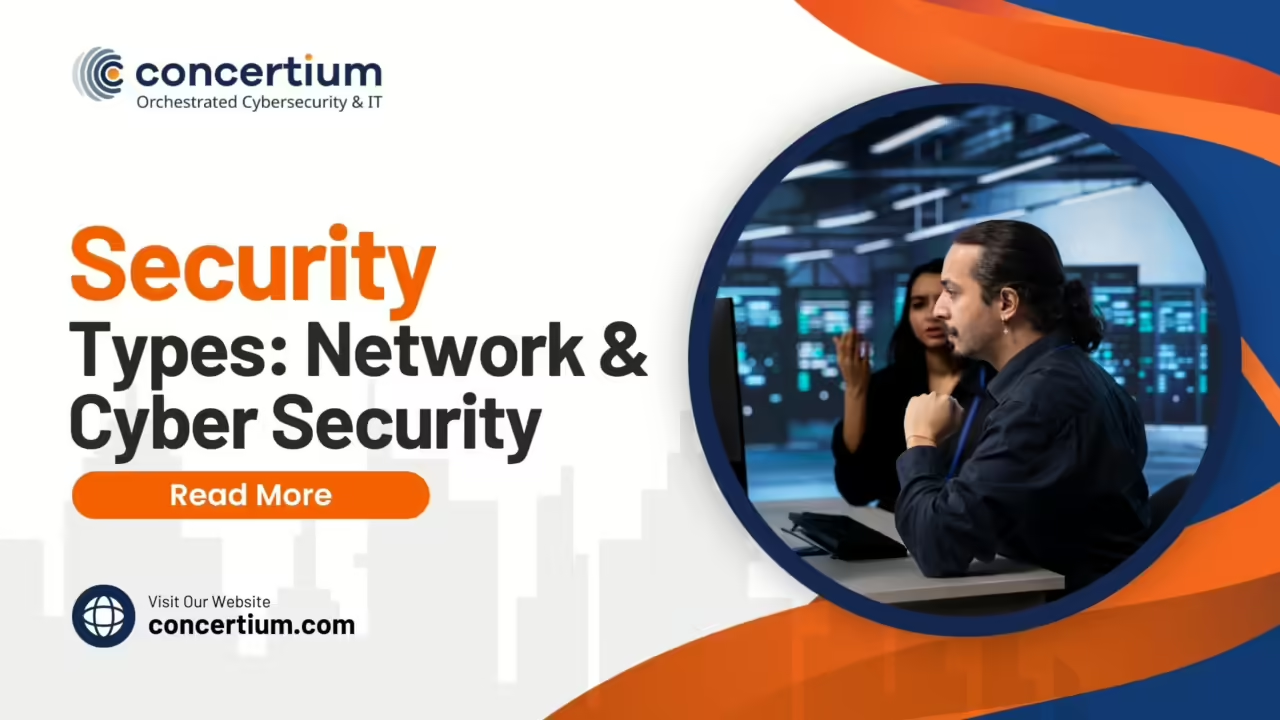Security refers to more than just protecting a single aspect of business or personal life. It encompasses a wide range of strategies, protocols, and security systems designed to protect diverse assets. These assets range from sensitive digital information and corporate networks to financial investments. The need for robust security management has become more critical than ever, especially with the rise in cyber threats and vulnerabilities targeting both individuals and enterprises. This blog explores the different security types—network security, cybersecurity, and financial securities—while highlighting how they contribute to a secure network and financial safety.
Network Security Types: Safeguarding Digital Infrastructures
Network Security Solutions: Creating a Secure Network
Network security focuses on protecting the integrity and accessibility of data and devices within an enterprise network. This type of security prevents unauthorized access, ensures that the network remains functional, and protects against potential threats such as malware, DDoS attacks, and insider threats. Enterprises often deploy network security solutions like firewalls, intrusion prevention systems (IPS), and Network Access Control (NAC) to create a multi-layered defense strategy.
Common Types of Network Security Solutions
Security types and solutions used depends on the network’s complexity and the organization’s needs. One of the fundamental tools in this category is the firewall, which serves as a barrier between trusted and untrusted networks. It monitors incoming and outgoing traffic and blocks unauthorized access. Intrusion Prevention Systems (IPS) offer an additional layer of protection by detecting and preventing threats that firewalls might miss. Network Access Control (NAC) enforces security protocols to ensure that only authenticated and authorized users access the network.
Endpoint Detection and Response (EDR): Enhancing Network Security
EDR solutions provide real-time monitoring and response capabilities for all devices connected to the network, including computers, smartphones, and IoT devices. EDR enhances an enterprise network’s security posture by detecting suspicious activities, responding to potential breaches, and mitigating security vulnerabilities before they can cause harm.
Wi-Fi Security Types: Protecting Wireless Connections
Wi-Fi security is a crucial aspect of network security, especially for organizations that rely on wireless networks for communication and data transmission. Using secure Wi-Fi encryption techniques, such as WPA2 and WPA3, prevents unauthorized access and protects sensitive information from cyber threats. The Wi-Fi Alliance, an organization that certifies wireless security standards, has developed these protocols to ensure robust security across public and private networks.
Zero-Trust Security Models: A Modern Approach to Network Security
The Zero-Trust Security Model is an emerging trend in network security that operates on the premise of “never trust, always verify.” It assumes that threats could exist both inside and outside the network, so every access request is verified before granting permissions. This model significantly reduces the risk of unauthorized access and strengthens the overall security posture by continuously monitoring all connections, enforcing strict authentication, and limiting access based on the principle of least privilege.
Cybersecurity: Defending Against Digital Threats
Cybersecurity: Protecting Sensitive Information and Systems
Cybersecurity is a from the security types that focuses on defending computers, servers, mobile devices, and electronic systems from malicious attacks. It covers various domains, including data protection, identity management, and the implementation of robust security protocols. As the complexity and frequency of cyber threats grow, organizations must adopt comprehensive cybersecurity measures to protect against data breaches, malware attacks, and other types of cyber vulnerabilities.
Application Security: Ensuring Software Safety
Application security is a subset of cybersecurity that deals with securing software applications. Vulnerabilities in web applications can lead to serious security breaches, making it essential to use security tools like Web Application Firewalls (WAFs) and secure coding practices. Application security protects software from attacks such as SQL injections, Cross-Site Scripting (XSS), and other forms of malware that can compromise both the application and the data it handles.
Cloud Security: Safeguarding Data in the Cloud
Cloud security focuses on protecting data stored and processed in cloud-based environments. With the growing adoption of cloud services, securing data and applications in the cloud has become a top priority for enterprises. Effective cloud security involves using encryption, access control, and multi-factor authentication to prevent unauthorized access and data breaches. A robust cloud security strategy is crucial for maintaining the integrity and availability of cloud-hosted resources.
Essential Cybersecurity Tools: Building a Robust Security Strategy
A strong cybersecurity strategy relies on a combination of tools and techniques that work together to protect against different types of threats. Encryption is one of the most important methods, as it converts data into a secure format that only authorized users can access. Authentication methods like multi-factor authentication (MFA) add an extra layer of security by requiring additional verification steps beyond a simple password. Implementing these security practices helps organizations build a more resilient security posture that can withstand sophisticated cyber threats.
Financial Securities: Protecting Investments and Financial Assets
Understanding Financial Securities: Definition and Overview
Financial securities are tradable financial assets that represent ownership or debt in an entity. They are typically categorized into three main types: equity securities, debt securities, and hybrid securities. These securities include stocks, bonds, and other financial instruments that provide security for investors by offering returns through dividends, interest payments, or capital gains.
Types of Financial Securities: Equity, Debt, and Hybrid
Financial securities can be classified based on their characteristics and the rights they confer to holders. Equity securities represent ownership in a corporation, such as stocks, while debt securities are essentially loans made by investors to entities like governments or corporations. Hybrid securities combine features of both debt and equity, offering a flexible investment option.
Equity Securities: Representing Ownership
Equity securities usually provide holders with ownership in a company, voting rights, and a share of the company’s profits. An example of an equity security would be common or preferred stock. Holders of equity securities benefit from the company’s growth and have a claim on assets in the event of liquidation, making them a popular investment choice for long-term growth.
Debt Securities: Providing Regular Returns
Debt securities are debt instruments like corporate bonds, government bonds, and certificates of deposit. Securities are debt instruments when they represent a loan that the issuer must repay with regular interest payments. These securities are considered safer than equity securities because they provide fixed returns and are less affected by market volatility.
Hybrid Securities: Combining Features of Debt and Equity
Hybrid securities include preferred shares and convertible bonds, which offer characteristics of both debt and equity. For example, convertible bonds can be converted into equity at a predetermined rate, allowing investors to benefit from the stability of debt and the growth potential of equity. This unique combination makes hybrid securities an attractive option for diversifying investment portfolios.
Emerging Security Trends in the Financial Sector
Digital Transformation: Changing the Landscape of Financial Securities
With the advent of digital trading platforms, the way financial securities are bought and sold has undergone a significant transformation. Online platforms provide greater accessibility and transparency, allowing investors to manage their portfolios with ease. Digital securities, which represent traditional securities on a blockchain, are becoming more common, providing new opportunities for secure and efficient trading. These digital assets are managed through a robust security network that incorporates encryption and secure trading protocols, ensuring a high level of protection for both equity and debt securities.
Compliance and Regulation: Ensuring Fair Trading Practices
The Securities and Exchange Commission (SEC) plays a pivotal role in regulating the trading of financial securities in the U.S. By setting rules and guidelines, the SEC ensures that trading practices are transparent and that investors are protected from fraud and manipulation. Compliance with SEC regulations is essential for maintaining the integrity of the financial markets and safeguarding the value of the securities being traded, whether they include a fixed return, such as government and corporate bonds, or variable returns, like stocks.
Government and Corporate Bonds: A Safe Haven for Conservative Investors
Government and corporate bonds are popular debt securities that offer a fixed rate of return, making them a common investment choice for risk-averse investors. Bonds, like a bond issued by a government, are considered one of the safest investment options because their value is based on the issuer’s creditworthiness. These securities are typically less volatile than equity investments and provide regular interest payments until maturity. Including bonds in a diversified portfolio can help balance the risks associated with equity securities.
Derivative Securities: Managing Financial Risks
Derivative securities are complex financial instruments whose value is based on an underlying asset, such as stocks, bonds, or market indices. These securities are fungible and include options, futures, and swaps, allowing investors to hedge against potential losses or speculate on price movements. Due to their complexity, organizations need to implement enterprise-grade security solutions to monitor derivative trading and ensure compliance with financial regulations.
Impact of Digital Platforms on Mutual Funds and Equity Securities
The growth of digital trading platforms has also impacted mutual funds and equity securities. Mutual funds, which pool investments from multiple investors, now offer digital access, making it easier for individuals to buy and sell shares. The number of shares in these funds is adjusted regularly based on inflows and outflows, ensuring liquidity. For equity securities, digital platforms support their work by providing real-time access to stock prices, trade execution, and portfolio management tools.
Security Awareness and Managed Security for Financial Platforms
As the digital landscape evolves, security awareness is crucial for both investors and financial institutions. Managed security services, which provide security monitoring, threat detection, and incident response, are becoming essential for protecting digital trading platforms. Financial institutions leverage security platforms and web application security to safeguard sensitive data and ensure that trading environments are secure against cyber threats. Enterprise-grade security solutions, such as those provided by cloud services like Azure, are frequently deployed to establish a robust security network that supports secure trading and compliance with financial regulations.
Web Application Security and the Role of Public Networks
Web application security is a key concern for digital trading platforms, especially those that operate on public networks. Implementing strong encryption protocols, such as those certified by the Wi-Fi Alliance, and utilizing web application firewalls (WAFs) are essential strategies for ensuring a secure environment.
This approach is critical for platforms that utilize public Wi-Fi networks, as weak Wi-Fi encryption could expose sensitive trading data to potential cyber threats. Organizations need to enforce security protocols and use managed security services to ensure that all data transmitted over public networks is adequately protected.
BYOD Policies and Security in Financial Institutions
Bring Your Own Device (BYOD) policies are becoming more common in financial institutions, allowing employees to use personal devices to access corporate networks and trading platforms. While this trend enhances flexibility, it also introduces new security challenges. Implementing strong security measures, such as multi-factor authentication and endpoint protection, is necessary to secure devices accessing the financial network. A robust BYOD security strategy can help organizations maintain a high level of security while accommodating the needs of a mobile workforce.
Digital Securities and the Future of Financial Trading
Digital securities, which represent traditional equity and debt securities on a blockchain, are emerging as a new trend in financial trading. They offer enhanced security, transparency, and efficiency compared to conventional securities. As these digital assets become more common, organizations will need to adopt advanced security platforms and encryption techniques to protect against cyber threats and maintain investor confidence. The shift towards digital securities is reshaping the financial landscape, making secure digital trading platforms a top priority for financial institutions worldwide.
FAQs: Understanding Security Types
What are the key network security solutions for protecting enterprise networks?
Network security solutions include firewalls, Intrusion Prevention Systems (IPS), and Endpoint Detection and Response (EDR) tools. These systems work cohesively to provide security protection against cyber threats, unauthorized access, and malicious activities within the corporate network. Security teams use these solutions to strengthen security operations and maintain a secure network, ensuring that critical assets remain protected.
How does encryption enhance cybersecurity?
Encryption is a vital component of any cyber security strategy, converting sensitive data into a secure format that can only be accessed by authorized parties. By encrypting data during transmission and storage, organizations can safeguard information integrity and confidentiality. This method of security protection is essential for protecting sensitive data within various digital environments, including cloud services and Wi-Fi networks.
What are debt and equity securities, and how do they differ?
Debt and equity securities are two primary categories of financial securities. Equity securities represent ownership in a corporation, such as stocks, giving holders a claim on assets and profits. In contrast, debt securities are essentially loans provided to an organization or government, which must be repaid with interest over time. A typical example of securities in the debt category includes corporate bonds, while stocks are considered equity securities. Understanding the distinction between these security types is crucial for developing a diversified investment strategy.
What are WPA2 and WPA3, and how do they provide security for Wi-Fi networks?
WPA2 and WPA3 are two widely recognized Wi-Fi security types established by the Wi-Fi Alliance to protect wireless communications. WPA2 uses a strong encryption method known as AES (Advanced Encryption Standard) to encrypt data, while WPA3 offers enhanced security protection with improved encryption standards and resistance to brute-force attacks. Implementing WPA3 is recommended for modern Wi-Fi networks to maintain a robust security posture against cyber threats.
What is the Zero-Trust Security Model, and why is it important?
The Zero-Trust Security Model is a modern approach to cyber security that assumes no trust for any user or device, whether inside or outside the network. It enforces strict verification protocols, limits access based on roles, and continuously monitors all activity within the network. This model enhances security operations by reducing the risk of data breaches and providing comprehensive security protection for sensitive information. Security teams implement Zero-Trust models to create a robust security strategy that can adapt to evolving threats and vulnerabilities.
The diverse types of security solutions—network security, cyber security, and financial securities—each serve a unique role in safeguarding digital and financial assets. With threats becoming increasingly sophisticated, adopting robust security practices and leveraging advanced tools like encryption and access control are critical steps to ensure comprehensive security protection across all domains.






